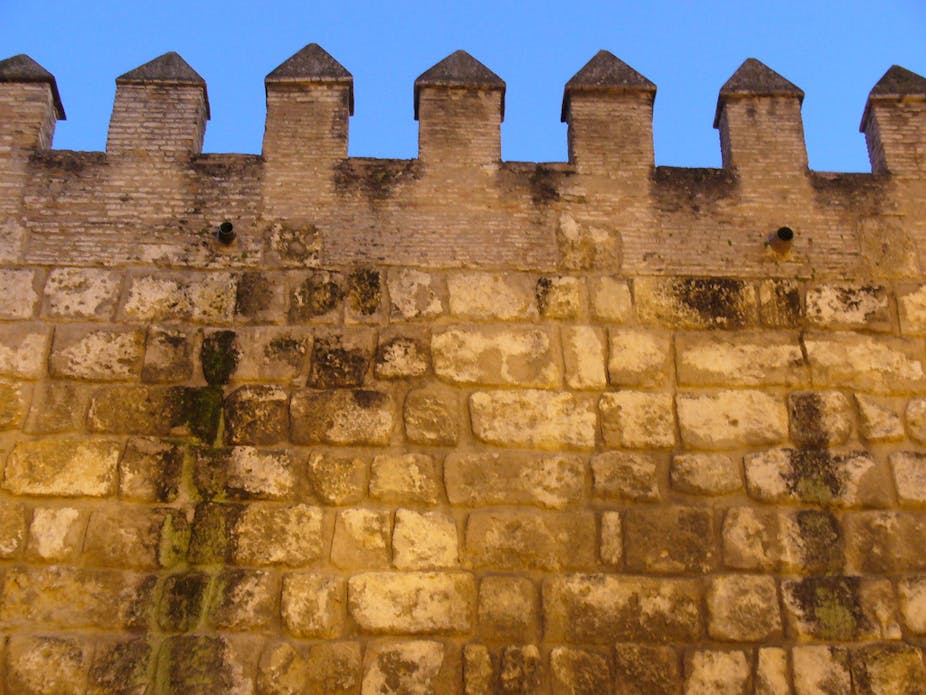New Delhi metallo-beta-lactamase 1, or NDM-1 bacteria as they’re commonly known, are among the most dangerous superbugs to have emerged in recent years. They’re resistant to almost all the antibiotics we’ve discovered to date.
NDM-1 was first described in 2009 in a Swedish patient who’d been in New Delhi, India. It’s a gene that can be transferred between bacteria, which allows them to produce a very powerful enzyme that destroys what was previously our last line of defence – the carbapenem antibiotics (distant cousins of penicillin that were the last standard antibiotics still able to kill some of the earlier superbugs).
Now there’s only one antibiotic left that really works against this new generation of superbugs – a forgotten antibiotic called colistin.
Forgotten but not gone
Colistin has been around for a long time. It was originally discovered in 1949 and was in clinical use until the 1970s, when it was replaced by newer antibiotics that were better against more types of bacteria, and that had fewer side effects.
So colistin vanished from use for a while – and this has been its saving grace. Because the antibiotic hasn’t been used for such a long time, bacteria didn’t have the chance to develop resistance against it and pass it around. Most superbugs emerging now haven’t seen colistin before and remain susceptible to the drug.
But there are three big drawbacks to using this antibiotic.
First, it can have severe side effects, including damage to the kidneys. Clinicians are getting on top of this with improved dosing schedules and a better understanding of how to handle other side effects. But patients on colistin can still suffer from kidney damage.
Colistin only works against certain types of bacteria – it’s not a “wonder drug” that kills all superbugs (for instance, it does not work against MRSA). And colistin-resistant bacteria are already appearing, so we can’t rely on this antibiotic to work forever.
Why so strong?
To understand what makes colistin different from other antibiotics and why it still works, we need to understand a little more about how bacteria are built and how they work.
Just imagine that a bacterium is like a little town: it has its own factories to produce things it needs, its own power plant, a central library with the master plans for all things produced in the factories, and a steady stream of raw materials coming in from the outside. For protection, the town is surrounded by a wall that has quite a few gates – some guarded, some unguarded – through which all the produce and raw materials come in and waste gets carried out.
All bacteria are much the same on the inside, even though they may produce slightly different things in their factories and use some different raw materials. But they have major differences in the barriers they make to protect themselves from attack.
Some bacteria build very strong walls on the outside (think thick medieval stone walls) to keep things out that they don’t want inside. Most antibiotics need to get to the inside of bacteria to destroy them. They do this by either sneaking in through the gates or by weakening and breaking down parts of the wall.
Other bacteria have only a somewhat flimsy wall that surrounds them but they have strong defences (think barbed wire) on the outside of the wall and their gates are better guarded. This makes it a lot harder for antibiotics to get inside and they can’t attack the town wall directly because the barbed wire is in the way.
This is where colistin comes in. It’s too big to get in through the gates and it can’t break through those strong town walls of the first type of bacteria, but it has the ability to cut through barbed wire fences. Once through, the flimsy wall behind is no real obstacle any more and colistin can go and wreak havoc inside the bacterium and kill it.
But if previous experience with antibiotics has taught us anything, it’s that the bacteria will find a way around this. There are already some bacteria that managed to strengthen that barbed wire fence and have become resistant to colistin.
Colistin originally comes from one particular species of bacteria (Paenibacillus polymyxa). As a mechanism to avoid being killed by the colistin they produce, these bacteria also make an enzyme that can destroy colistin. It doesn’t seem likely at the moment, but should the gene for this enzyme manage to get transferred to a superbug there will be truly nothing left to stop them. The only option left to save a patient’s life will be surgery, including amputation.
As in pre-antibiotic times getting an infection after something simple such as standard surgery on your knee may mean that you could lose the whole leg!
This is the fifth article in Superbugs vs Antibiotics, a series examining the rise of antibiotic-resistant superbugs. Click on the links below to read the other instalments.
Part one: Washing our hands of responsibility for hospital infections
Part two: Superbugs, human ecology and the threat from within
Part three: We can beat superbugs with better stewardship of antibiotics
Part four: The hunt is on for superbugs in Australian animals
Part six: Unblocking the pipeline for new antibiotics against superbugs
Part seven: A peek at a world with useless antibiotics and superbugs
Part eight: Trading chemistry for ecology with poo transplants
Part nine: New antibiotics: what’s in the pipeline?

